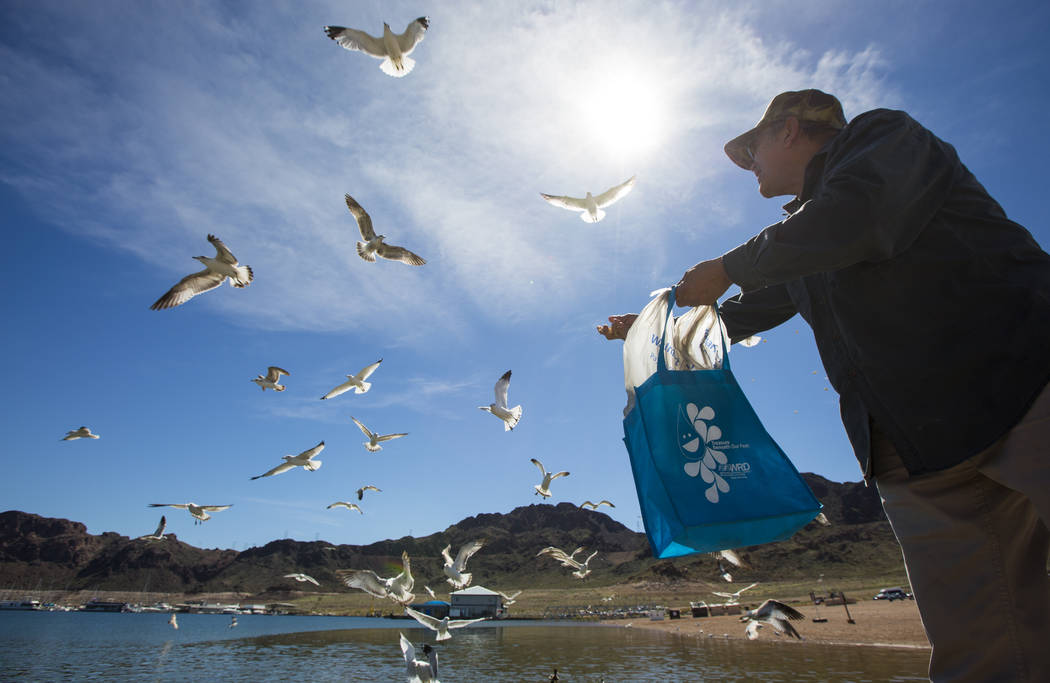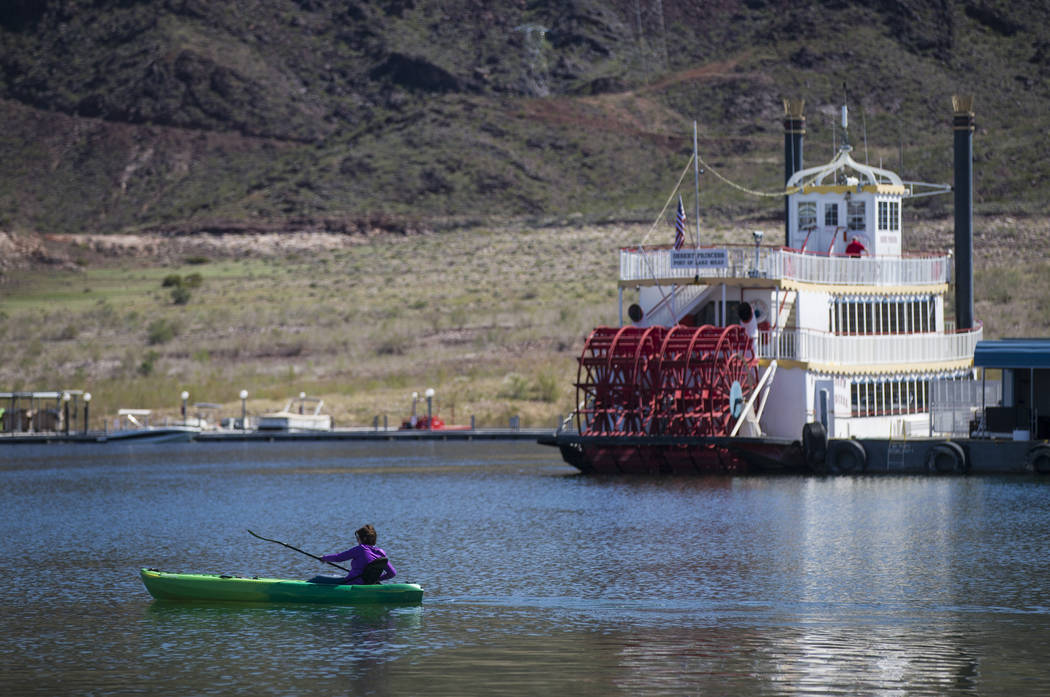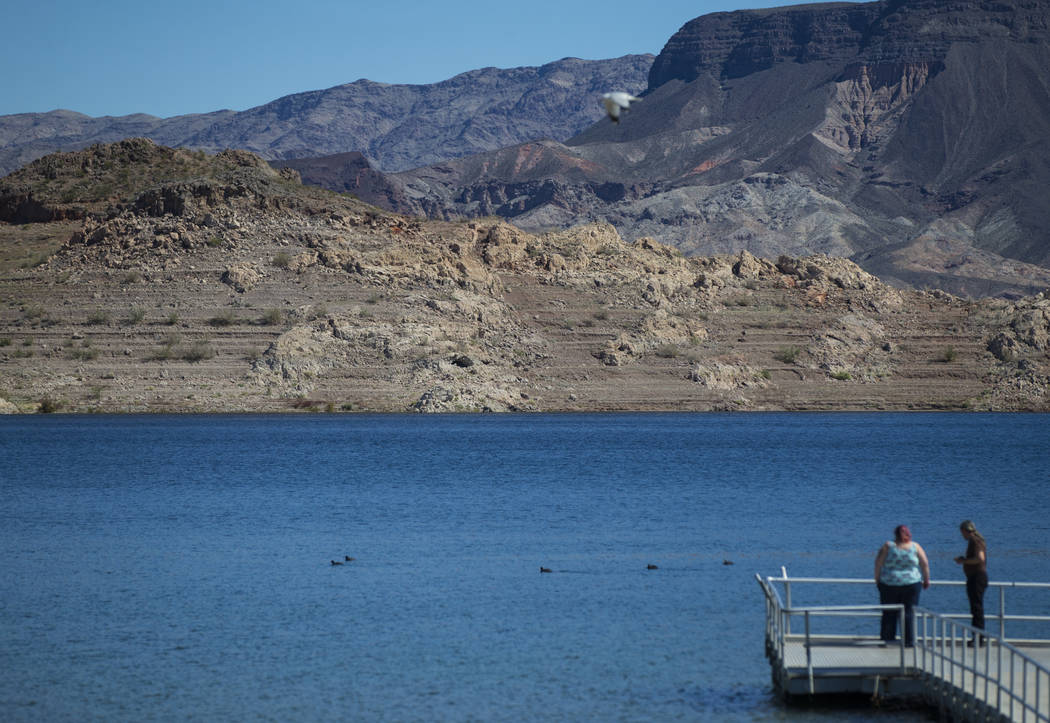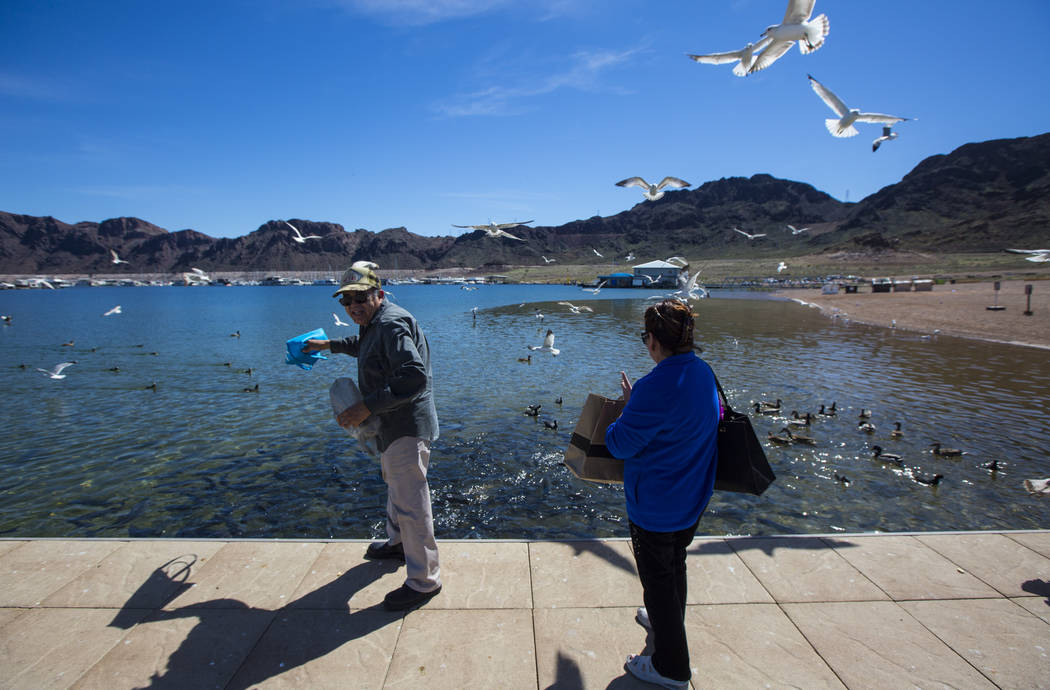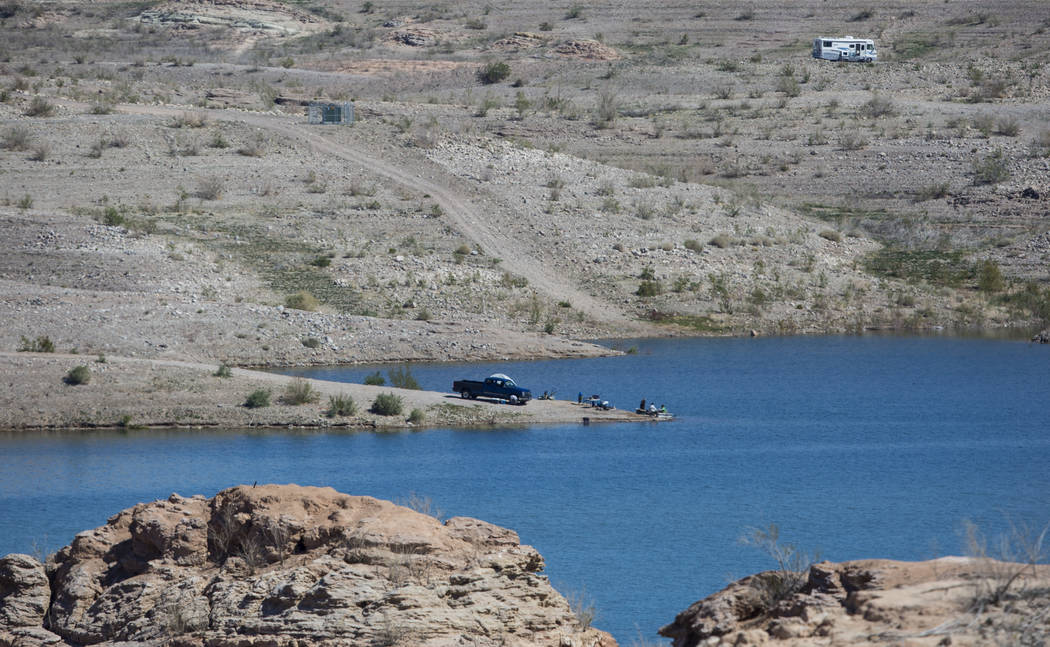Worsening dry spell won’t tip Lake Mead into shortage — yet
An already dry winter for the Colorado River has gotten worse in recent weeks, but it won’t be enough to send Lake Mead to a record low — at least not right away.
Despite worsening conditions in the mountains that feed the Colorado, forecasters still expect the reservoir east of Las Vegas to contain just enough water by the end of the year to avoid a first-ever federal shortage declaration.
A month ago, the Colorado River Basin was on track for its seventh-driest winter in more than half a century. Now forecasters say this winter will likely go down as the sixth-driest on record for the river system that supplies 90 percent of the Las Vegas Valley’s drinking water.
“This entire water year has been characterized by way below-average precipitation,” said Paul Miller, service coordination hydrologist with the National Weather Service’s Colorado Basin River Forecast Center in Salt Lake City. “It’s bad everywhere.”
It’s especially bad in Arizona, where snow levels across much of the state are roughly one-third their normal levels, Miller said.
In the entire basin, only the Upper Green River area in Wyoming has seen more snow than usual this winter.
‘Atmospheric river’ may help
Miller said forecasters are hopeful an incoming “atmospheric river” could dump some much-needed snow across much of the basin, but this late in the season there is little chance for significant improvement in the overall outlook.
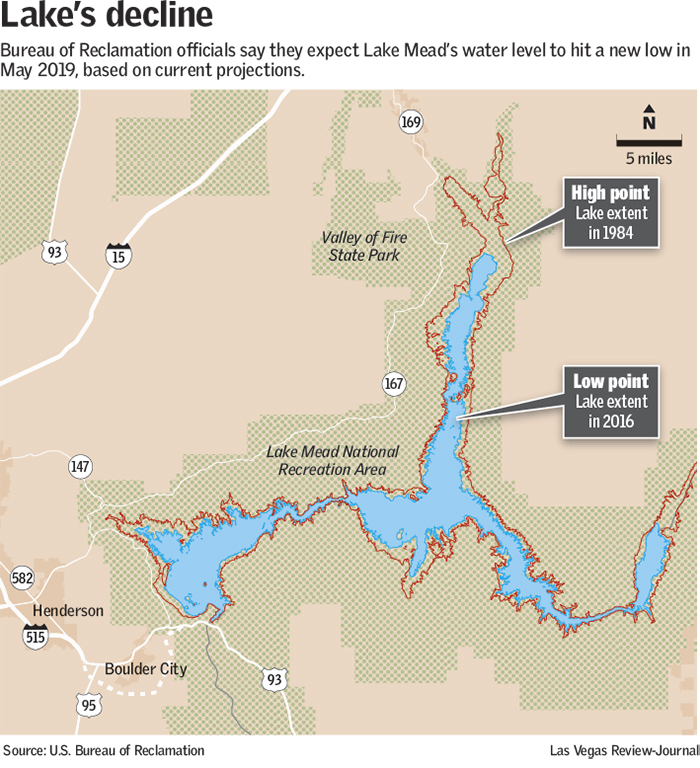
“It won’t be enough to turn things around,” he said of the approaching weather system. “I think there is some hope things won’t get worse.”
The basin’s snowpack typically peaks by April 1 and then begins to melt and flow downstream into Lake Powell on the Utah-Arizona border through July.
In February, forecasters said they expected Lake Powell to receive about 47 percent of its average inflow this year. That forecast was downgraded late last week to 43 percent of average.
The latest bad news for Western water managers comes on the heels of a new study showing an unexpectedly large decline in snowpack across the region over the past century.
Researchers at Oregon State University found the average snowpack in Western states has fallen by between 15 and 30 percent since 1915, with enough water lost to fill Lake Mead, the nation’s largest man-made reservoir.
“We found declining trends in all months, states and climates, but the impacts are the largest in the spring, in Pacific states, and in locations with mild winter climates,” lead author Philip Mote, director of the Oregon Climate Change Research Institute at Oregon State University, said in a written statement. “In many lower-elevation sites, what used to fall as snow is now rain.”
The study was published March 2 in NPJ Climate and Atmospheric Science, a Nature publication.
Last year helped
Fortunately, Miller said, this year’s disappointing snowpack follows above-average snowfall and runoff in 2017 that helped boost reservoirs across the West.
The added cushion in Lake Mead should help keep its surface about two feet above the trigger line for a federal shortage, despite projections from the U.S. Bureau of Reclamation that call for the lake to drop by about 11 feet between now and Dec. 31. 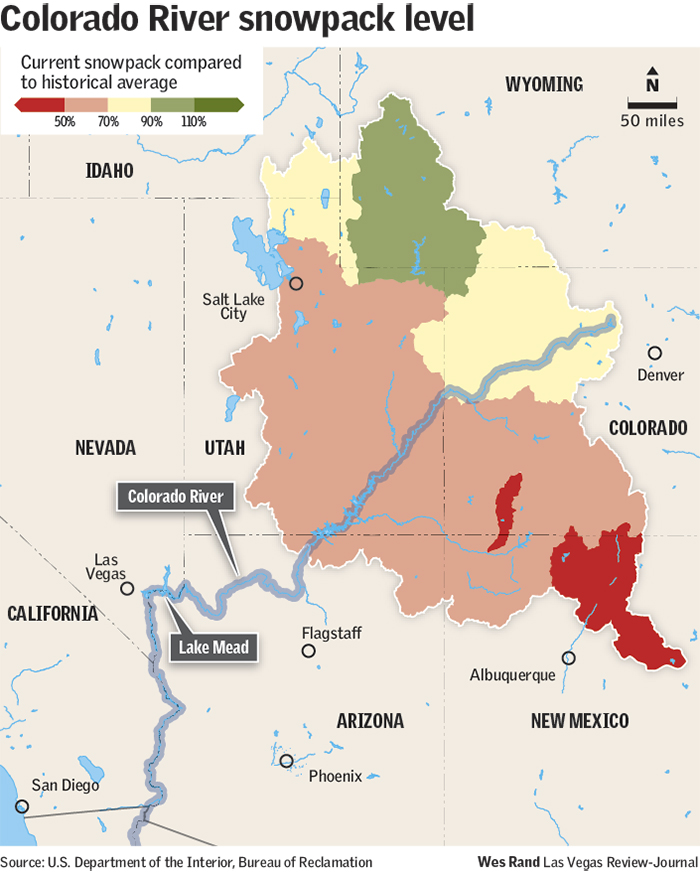
Under such a shortage declaration, Nevada would have to reduce its river use by 4 percent, while Arizona would take an 11 percent cut.
Southern Nevada Water Authority officials say valley residents have conserved more than enough water to easily absorb such a cut, but prolonged shortages and deeper cuts would make it hard to meet future water demands as the community continues to grow.
Officials in Nevada, California and Arizona have spent the past several years negotiating a drought contingency plan, under which the states would voluntarily reduce their use of Colorado River water to prop up Lake Mead.
Right now that plan is stalled by internal squabbles among water users in Arizona and California over how to share those voluntary cuts.
Contact Henry Brean at hbrean @reviewjournal.com or 702-383-0350. Follow @RefriedBrean on Twitter.
Running dry
If the current forecast holds, 2018 will go down as the sixth-driest winter on the Colorado River in more than 50 years. Five of the 10 driest winters have come since 2002.
Here are the 10 driest winters since 1964, based on the flow of water (in acre-feet) into Lake Powell during peak snowmelt from April through July:
1. 2002: 964,000 acre-feet of inflow, 13 percent of the long-term average.
2. 1977: 1.2 million, 17 percent.
3. 2012: 2.1 million, 29 percent.
4. 2013: 2.6 million, 36 percent.
5. 1981: 3 million, 42 percent.
6. 2018: 3.1 million, 43 percent (forecast).
7. 1990: 3.2 million, 44 percent.
8. 1989: 3.4 million, 48 percent.
9. 2004: 3.5 million, 49 percent.
10. 1994: 3.9 million, 54 percent.
One acre-foot is enough to supply two average Las Vegas Valley homes for just over one year.
Source: National Weather Service's Colorado Basin River Forecast Center



